BASF Filaments Forward AM :
3D printing solutions along the entire Additive Manufacturing value chain, under the brand Forward AM:
From consultancy and development, through bespoke design, digital simulation and prototype printing, to finishing and exhaustive component testing – we provide you with exactly what your business needs.
Whichever material you require for your specific project, Forward AM offers you the world’s largest selection of 3D printing materials and service solutions.

BASF Filaments (FFF/FDM Chart)
Available
BASF Printing Filaments - Standard
Easy / Multipurpose / Multi-Color
Overview
PLA (Polylactic Acid) is a biodegradable, sustainable and food safe polymer made from organic sources.
It is the most common used filament in FFF 3D printers for its ease of use and wide range of applications, specially those not mechanically or thermally demanding. Definitely a good starting point to learn about the 3D Printing manufacturing process.
Compatibility: Find out the BCN3D printers and filaments compatibility

Applications
- Architectural mockups
- Aesthetic, concept models
- Investment casting molds
- Low mechanically demanding prototypes

Properties
- Detailed and glossy surface quality
- Good tensile strength
- Rigid, fragile behaviour
- Good UV resistance
- Withstand operating temperatures up to 50°C
- Odor-free, ideal for educational and office environments
- Compatible with PVA supports
- Low solvent and water resistance
How to print





Impact resistant / Stiff / Easy to print
Overview
Strong, flexible and has a high heat resistance. ABS is a preferred plastic for engineers and professional applications. ABS can be smoothened with acetone. To make a proper 3D print with ABS you will need a heated print bed. The filament is available in 9 colors.

Applications
- Functional prototypes
- Chemical environment
- Reasonable heat resistance
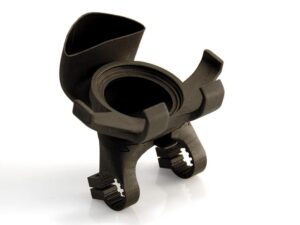
Properties
- Long life span
- Very tough
- High wear and tear
- Can be used for working parts
- Chemical resistance
How to print





Moisture resistant / Heat resistant / Easy
Overview
Ultrafuse PET is made from a premium PET and prints as easy as PLA, but is much stronger. The filament has a large operating window for printing (temperature vs. speed), so it can be used on every 3D-printer. PET will give you outstanding printing results: a good layer adhesion, a high resolution and it is easy to handle. Ultrafuse PET can be 100% recycled, is watertight and has great colors and finish.

Applications
- Parts where weathertightness is required
- Food applications (based on natural raw material information)
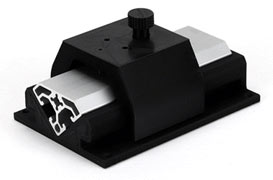
Properties
- Resistance to corrosive chemicals
- Good balance of strength, impact resistance and elongation at break
- Great dimensional stability and toughness
- Good glossy surface quality
- Good abrasion resistance
- Water and moisture barrier
- Withstand operating temperatures up to 70°C
- Low rate of ultrafine particles (UFP) and volatile organic compounds (VOC)
- Compatible with PVA supports
How to print



≥ 0.4 mm


Low Density / Wear resistant / Tough
Overview

Applications
- Chemical Contact
- Prototyping
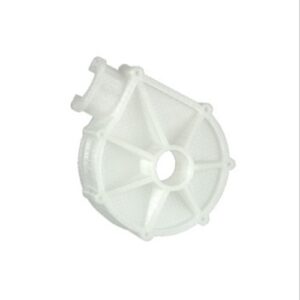
Properties
- Tough and strong
- Fatigue resistant
- Chemical resistant
- Light weight (low density
How to print





Sustainable / Easy
Overview
The 3D printing community provides a powerful opportunity to make current manufacturing methods more sustainable, so we have challenged ourselves to create a filament made from recycled material that is a serious alternative to filaments made from virgin raw materials.
We are now proud to say that with the new Ultrafuse® rPET we have more than met the challenge. The “r” stands for recycled, as Ultrafuse® rPET is made from recycled PET medical equipment. Components printed with Ultrafuse® rPET print, look and perform as outstandingly as our PET filament made from virgin raw material.
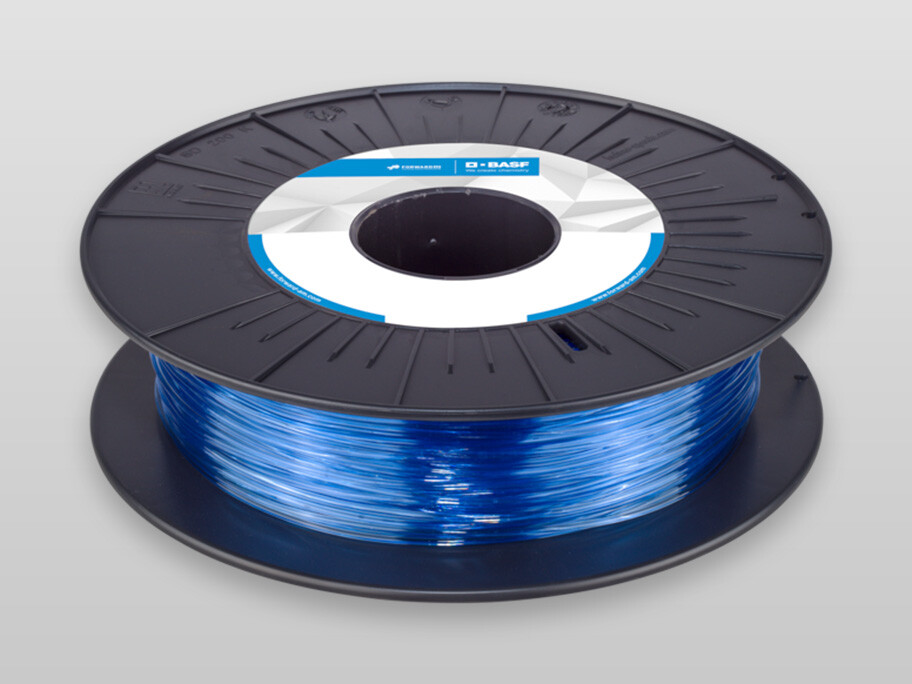
Applications
- Jigs & fixtures
- Automotive parts
- Prototyping

Properties
- Sustainable alternative to PET
- Easy to print Great end results
- Biodegradable
How to print



- Nozzle Diameter:
- ≥ 0.4 mm


30 – 60 mm / s
BASF Filaments - Engineering
Speed / Strength / Versatility / Consistency
Overview
Ultrafuse® PLA PRO1 is developed as a high-speed engineering thermoplastic that prints as easy as PLA, at speeds previously considered unusable. Yet it retains far better mechanical properties, that even exceed printed ABS objects. Something that the most demanding users have always had to make a compromise on prior to Ultrafuse® PLA PRO1.
By varying the print settings, users can optimize for speed, strength, surface quality or a mix of those qualities beyond performance levels of traditional filaments. When you find yourself in an environment that requires reliable performance print after print, look no further than to increase your productivity with Ultrafuse® PLA PRO1. By cranking up the speed you can save at least 30%* in printing time. To achieve this high speed, we recommend setting your printer in the temperature range of 220°C to 230°C*. Superfast printing may affect surface quality. Ultrafuse® PLA PRO1 has strong layer adhesion which makes prints much stronger, thus increasing functionality.

Applications
- Jigs & fixtures
- Prototyping
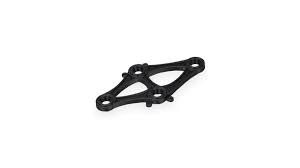
Properties
- Speed: Reduce your printing time by 30% – 80%, (subject to printer/ object limitations)
- Strength: Excels overall beyond printed ABS in mechanical properties
- Versatility: One filament that can be tuned towards blazing speed and excellent surface finish
- Consistency: Truly consistent filament, also between colors and batches, it will perform as expected, every time
How to print



Nozzle Diameter:
≥ 0.4 mm


Efficient Engineering-filament. Printing for non-print Engineers
Overview
Ultrafuse® ABS Fusion+ is an easy-to-print engineering material and enables a much more efficient printing process. Meaning 3D printing operators will spend less time tinkering and more time exploiting the full potential of your 3D printing rig. To top it off, Ultrafuse® ABS Fusion+ adheres to water-soluble support – no more hassle with chemicals, just dissolve your support in water after printing!
The 3D printing community has so far considered ABS an unforgiving material: Now, thanks to the unique properties of ABS Fusion+ you can look forward to a high success rate with greatly improved dimensional stability.

Applications
- Jigs and fixtures
- Automotive part
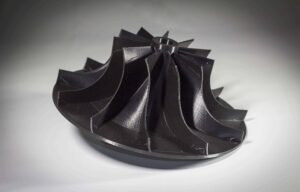
Properties
- Easy to print
- Direct printing on heated glass or print bed surfaces
- High heat resistance
- Adheres to water soluble support
How to print



Nozzle Diameter:
≥ 0.4 mm


A high-performance thermoplastic
Overview
Ultrafuse ASA is a high-performance thermoplastic with similar mechanical properties as ABS. ASA offers additional benefits such as high outdoor weather resistance. The UV resistance, toughness, and rigidity make it an ideal material to 3D-print outdoor fixtures and appliances without losing its properties or color. When also taking into account the high heat resistance and high chemical resistance, this filament is a good choice for many types of applications.

Applications
- Outdoor use
- Functional prototypes
- Chemical environment
- Reasonable heat resistance
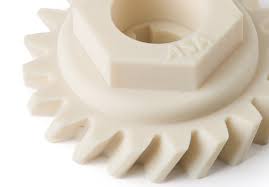
Properties
- UV stabilized
- Weather resistance
- Long life span
- Very tough
- Resistant to wear and tear
- Chemical resistance
How to print



Nozzle Diameter:
≥ 0.4 mm


First BASF Filament Development Based on Ultramid®
Overview
Ultrafuse® PA is the translation of BASF ́s Ultramid® to the 3D printing space. It is based on a copolyamide 6/66 grade of intermediate viscosity. With Ultrafuse® PA, it is possible to print semi-flexible thin parts; however, it is very rigid at higher thicknesses. It has a lower melting temperature than PA6 and PA66, meaning it can be printed at a lower temperature and also has better impact resistance versus PA6 and PA66, opening up a whole new application field for end-users.

Applications
- Most engineering sectors
- Suitable for a wide range of different components and machine elements, such as high-grade electrical insulation material

Properties
- Good fatigue resistance
- High mechanical strength
- Low melting point makes it printable for many FFF printers
- Good wear resistance/ lubricity
- Good impact resistance at low temperatures
How to print



Nozzle Diameter:
≥ 0.4 mm


Thermal Properties / Mechanical resistance / Strong
Overview
Ultrafuse® PC/ABS FR Black is a V-0 flame retardant blend of Polycarbonate and ABS – two of the most used thermoplastics for engineering & electrical applications. The combination of these two materials results in a premium material with a mix of the excellent mechanical properties of PC and the comparably low printing temperature of ABS. Combined with a halogen free flame retardant, parts printed with Ultrafuse® PC/ABS FR Black feature great tensile and impact strength, higher thermal resistance than ABS and can fulfill the requirements of the UL94 V-0 standard.

Applications
- Applications which require flame retardancy like :
- Housing for Raspberry pi
- Sockets and plugs
- Housing for handheld devices or powertools
- Automotive components
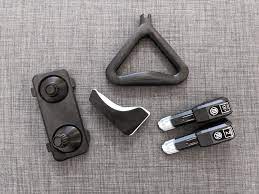
Properties
- Fulfills flame retardancy according to UL 94 V-0 (@1.5mm & 3.0mm)
- Outstanding aesthetics
- Strong layer adhesion
- High print speeds possible
How to print



Nozzle Diameter:
≥ 0.4 mm


BASF Filaments - Support
A great support material compatible with multiple filaments
Overview
Printing complex designs may only be possible with temporary support structures. Ultrafuse® BVOH water-soluble support filament has been designed to easily dissolve in water. The solubility is increasing with higher water temperature. It offers great compatibility to a variety of materials: PLA, PRO1, ABS, ABS Fusion+, PA and PAHT CF15. Store this monofilament in a sealed bag or container to prevent moisture uptake.
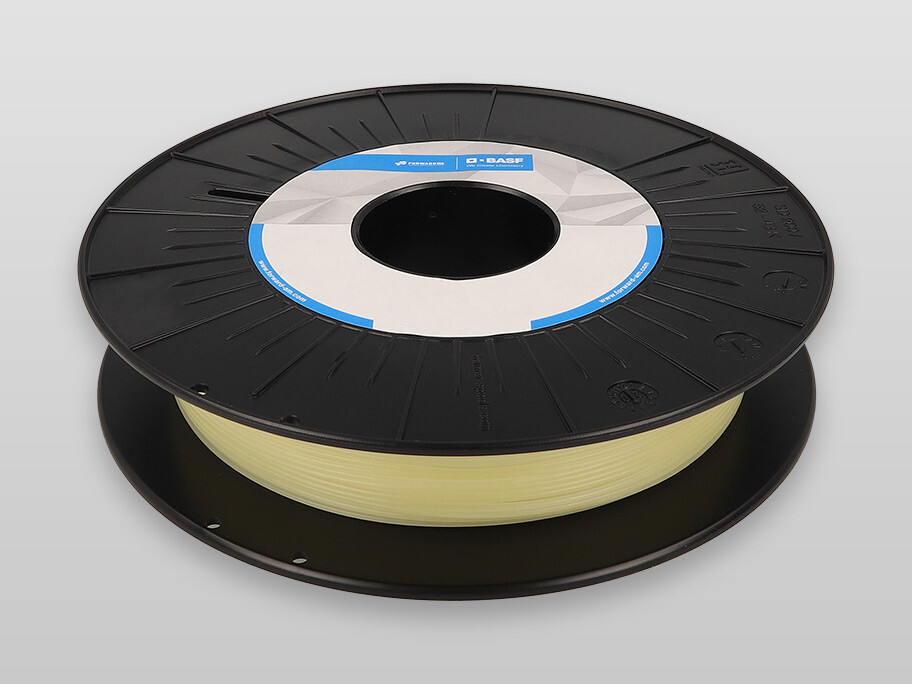
Applications
- Parts with overhang
- Hollow parts
- Complex parts
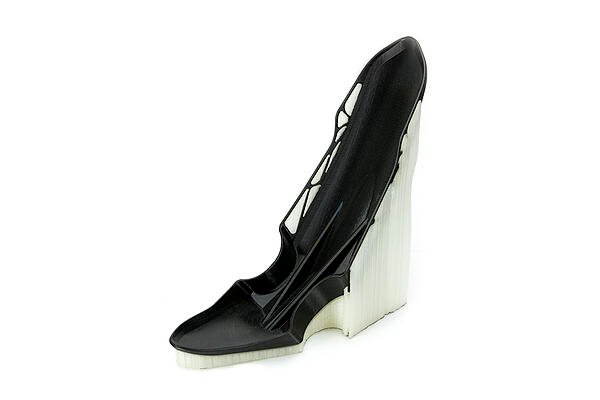
Properties
- Water soluble
- Dissolves 2 times faster than other PVA
- Support compatible with multiple materials, such as Ultrafuse PLA, ABS Fusion+, TPUs, PET, PA, PAHT CF15
How to print





A high-quality engineering thermoplastic as support material
Overview
Ultrafuse® HiPS is a high-quality engineering thermoplastic, which is well known in the 3D-printing industry as a support material for ABS. But this material has additional properties to offer like good impact resistance, good dimensional stability, and easy post-processing.
HiPS is a great material to use as a support for ABS because there is a good compatibility between the two materials, and HiPS is an easy breakaway support. Now you have the opportunity to create ABS models with complex geometry. Our HiPS is easy to post process with glue or with sanding paper.

Applications
- Support material for printing applications with ABS

Properties
- Easy post processing (Glue and painting)
- Good aesthetics
- Support material especially for ABS
How to print





BASF Filaments - Reinforced
Printing with a High Level of Reinforcement
Overview
Ultrafuse® PP GF30 contains 30% glass fibers that are specifically designed for 3D printing filaments making Ultrafuse® PP GF30 compatible with any conventional FFF printer.
PP has a lower moisture uptake than PA which makes Ultrafuse PP GF30 fully printable without need for drying. In combination with its high level of glass fiber reinforcement and its ex- cellent chemical resistance, Ultrafuse® PP GF30 is the preferred filament for exceptional harsh environments. Thanks to its UV resistance it is more suitable than any other PP-based filament for applications directly exposed to sunlight.

Applications
- Automotive / transportation
- Functional prototyping
- Jigs and fixtures
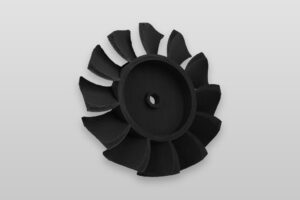
Properties
- Excellent chemical resistance
- Low density
- Low moisture uptake
- High heat resistance
- Improved UV resistance
How to print





Combines Easy Processability and very Low Moisture Carbon Fire Uptake with Excellent Strength and Rigidity – at an Affordable Cost
Overview
Ultrafuse® PET CF15 is an engineering filament optimized to enable users to develop new 3D printing applications with higher requirements. With its superior heat resistance, high strength and rigidity, this is a filament for a wide range of demanding industrial applications. Its high dimensional stability and very low moisture uptake makes it a perfect solution for applications in humid operating environments.

Applications
- Automotive
- Jigs and fixtures
- Applications for humid operating environments
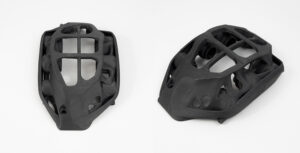
Properties
- Strong, rigid components Easy to process
- Very low moisture absorption
- Heat resistant up to 74 °C
- High dimensional stability
- Compatible with HIPS for breakaway support
- Excellent surface finish
How to print





High Temperature PA with 15 % Carbon Fiber
Overview
Ultrafuse® PAHT CF15 combines high temperature and chemical resistance with outstanding mechanical resilience. Due to its excellent dimensional stability your printed component will display low shrinkage during printing, ensuring an easy print experience. The nature of the fibers ensures that the parts remain very strong and highly rigid.

Applications
- Complex geometries in challenging environments
- Automotive

Properties
- Higher chemical resistance than most PA grades
- High temperature resistance up to 150 °C
- Strong, rigid components High dimensional stability
- Easy to process
- Low moisture absorption
How to print





A unique compound
Overview
Ultrafuse® PA6 GF30 is a unique compound specifically developed for FFF printing. Due to the glass fiber content of 30%, parts tend to warp less. In addition the excellent layer adhesion and its compatibility with the water soluble support Ultrafuse® BVOH make this material the perfect solution to develop industrial applications on an FFF printer.
With its high wear and chemical resistance, high stiffness and strength, Ultrafuse® PA6 GF30 is perfect for a wide variety of applications in automotive, electronics or transportation.
Ultrafuse PA6 GF30 is designed for functional prototyping and demanding applications such as industrial tooling, transportation, electronics, small appliances, sports & leisure

Applications
- Automotive / transportation
- Industrial tooling
- Functional prototyping

Properties
- Very high stiffness and strength
- Good chemical resistance
- Resistance to UV light exposure
- High wear resistance
- Excellent layer adhesion
- Works with Ultrafuse® BVOH
How to print





Perfect solutions for transportation industry applications
Ultrafuse® PC GF30 is a unique compound of PC with 30% glass fibers, specially designed for FFF printing. With its high heat deflection temperature and good dimensional stability, Ultrafuse® PC GF30 is the right material to use in an industrial environment where good temperature resistance and high strength is needed.
Its UL94 V0 rating makes PC GF30 the perfect solution for applications in transportation industry that require flame retardancy. The resistance to UV light exposure and its low moisture uptake makes Ultrafuse® PC GF30 highly suitable for interior and exterior applications

Applications
- Automotive / transportation
- Functional prototyping
- Electronics
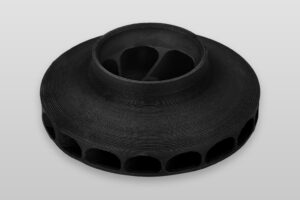
Properties
- UL94 V0 flame retardancy
- Resistance to UV light exposure
- Good temperature resistance
- High stiffness and strength
- Good heat deflection temperature
- Very low moisture absorption
- High dimensional stability
How to print





BASF Filaments - Flexible
First Flexible BASF Filament Based on Elastollan®
Overview
Ultrafuse® TPU 85A offers a broad range of degrees of hardness with different designs, making this filament an ideal material in applications where specific degrees of flexibility are critical.
Ultrafuse® TPU 85A comes in its natural white color. Chemical properties (e.g. resistance against particular substances) and tolerance for solvents can be made available, if these factors are relevant for a specific application. Generally, these properties correspond to publicly available data on polyether based TPUs. This material is not FDA conform. Good flexibility at low temperature, good wear performance and good damping behavior are the key features of Ultrafuse® TPU 85A.

Applications
- Functional flexible parts Footwear, sports and leisure
- Automotive, industrial manufacturing, agriculture, and construction
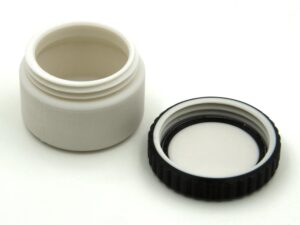
Properties
- High wear and abrasion resistance
- Very good low-temperature flexibility
- Excellent damping characteristics
- Excellent damping characteristics
- High resistance to oils, greases, oxygen and ozone
How to print





Thermoplastic Copolyester Elastomer based filament
Overview
TPC 45D is a flexible, shore 45D, rubber-like Thermoplastic Copolyester Elastomer (TPE-C), which is derived from rapeseed oil and combines the best properties of elastomers (rubbers) and polyesters. The material delivers excellent adhesion in the Z-direction, meaning that the printed layers don’t detach – even with extreme deformation.
Especially suitable for printing flexible parts like miniature tires, drive belts, bracelets and parts that have to be extremely flexible and have to be bent often.
This material is proven to have a carbon footprint up to 50% lower than comparable co-polyesters.

Applications
- Protective covers
- Turning parts
- Dampening
- Combining hard plastics with flex
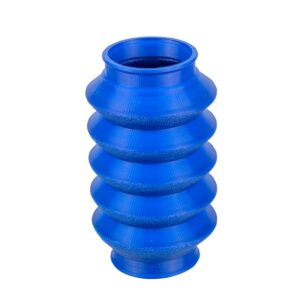
Properties
- Rubber-like Thermoplastic Copolyester Elastomer (TPE-C)
- Flexibility
- Impact resistance
How to print





The hardest elastomer in BASF Forward AM’s flexible product line
Overview
Ultrafuse® TPU 64D combines the best of two worlds by being a strong yet flexible filament for Fused Filament Fabrication, suitable for all FFF technologies. Building on BASF‘s decades of experience in flexible materials, this material is based on the established thermoplastic polyurethane Elastollan, standing for maximum reliability, consistent product quality and cost efficiency. Ultrafuse® TPU 64D is easily compatible with water soluble support. Thanks to its property profile, Ultrafuse® TPU 64D presents an excellent alternative to rubber and ABS for the manufacturing of tools, jigs and fixtures.
Ultrafuse® TPU 64D is easy to print on direct drive and bowden style printers and is compatible with soluble BVOH support to realize the most complex geometries.

Applications
- Functional flexible parts
- Wear and tear application
- Tooling, jigs and fixtures
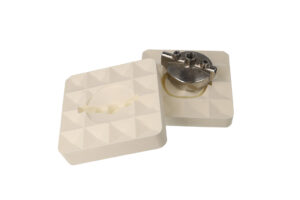
Properties
- High resistance to oils, greases, oxygen and ozone
- High wear and abrasion resistance
- High impact resistance
- Compatible with water soluble support
- Printable on direct drive and bowden style printers
How to print





Flexible Filament based on BASF Elastollan®
Overview
With its outstanding abrasion resistance, Ultrafuse® TPU 95A presents an excellent choice for wear and tear ap- plications. Parts printed with this material set themselves apart by high elongation at break, great layer adhesion and a god resistance to oils as well as industrially used chemicals.
Ultrafuse® TPU 95A comes with a well-balanced profile of flexibility and durability. On top of that, it allows for easier and faster printing then softer TPU grades.
Due to its good printing behavior, Ultrafuse® TPU 95A is a good choice for starting printing flexible materials on both direct drive and bowden style printers.

Applications
- Functional flexible parts
- Wear and tear application
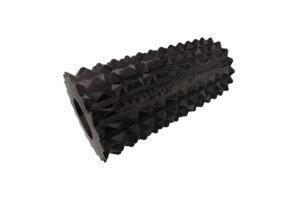
Properties
- Perfect for fast printing
- High abrasion resistance
- Easy to handle
- Good resistance to oils and common industrially used chemicals
- Printable on direct drive and bowden style printers
How to print





Especially developed for Fused Filament Fabrication and offers an outstanding non-slip soft touch!
Overview
Ultrafuse® TPS 90A is an elastomer based on the raw material SEBS. The combination of durable and flexible building blocks leads to a very versatile material.
Compared to other flexible 3D printing materials it shows more rubber-like soft touch haptics and better non-slip properties. Furthermore, the material shows a reduced moisture uptake, which allows for printing without pre- drying.
Parts printed with Ultrafuse® TPS 90A show almost no visible layers or warpage, which makes it an excellent material choice for end-use parts.

Applications
- Functional flexible parts
- Handles of appliances
- Seals and gaskets
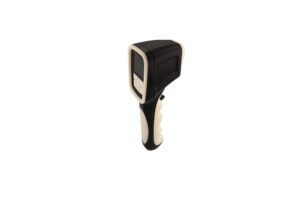
Properties
- Soft touch
- Non-slip properties
- Reduced moisture uptake
- Excellent layer adhesion
- Very good low-temperature flexibility
How to print





BASF Filaments - High Temperature
High Temperature Stable Applications
Overview
With its wide spectrum of material performance advantages, Ultrafuse® PPSU can be successfully used in applications where other plastics, e.g. polyamide, polycarbonate, polyoxymethylene and polyalkylene terephthalates, fail to meet the performance specifications. With its inherent flame-retardant properties, it is an especially suitable material for the aerospace industry.
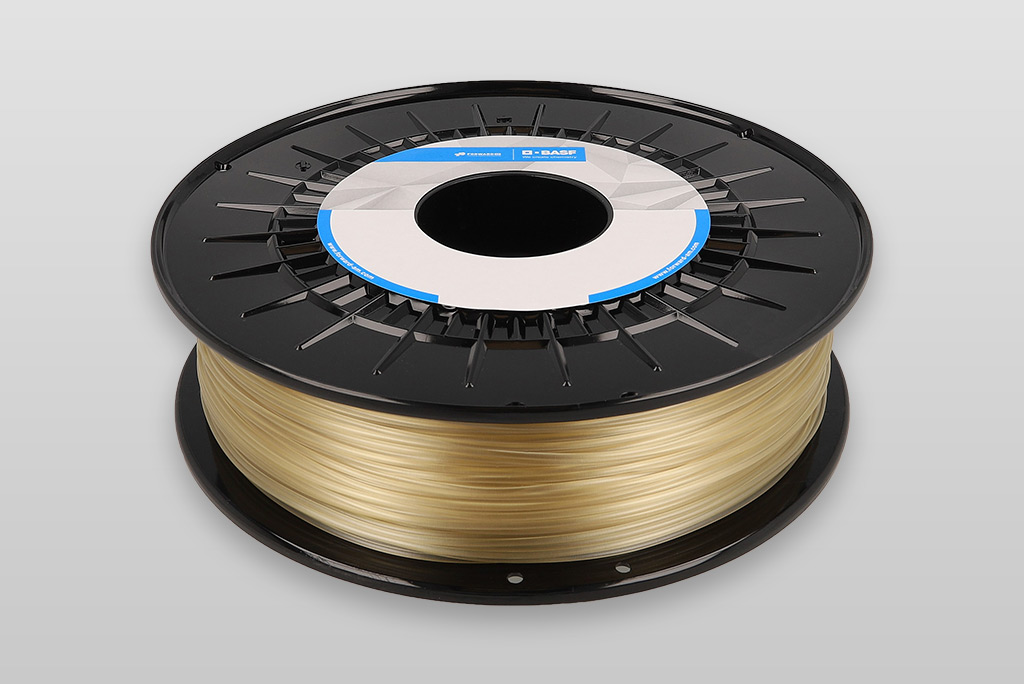
Applications
- Suitable for autoclaving processes
- Aerospace industry
- All applications exposed to high temperatures
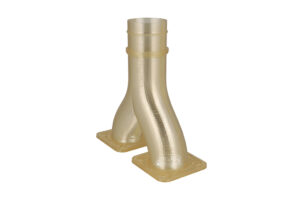
Properties
- Inherently flame retardant
- short-term temperature resistance up to 220 °C
- Resistant to long-term service temperatures up to 180 °C
- High dimensional stability
- Creep strength at high temperatures
- Oil-resistant, even at temperatures up to 170 °C
- Fuel and fluorine resistant
How to print





A high-quality thermal resistance, broad chemical resistance, strength and stiffness
Overview
The Ultrafuse® PEI 9085 filament is made from ULTEM 9085 resin*. This amorphous thermoplastic is a Polyetherimide (PEI) blend, specifically developed for its higher flow properties, offering outstanding printing behavior, high thermal resistance, broad chemical resistance, strength and stiffness.
Due to the unique properties, this material is a great addition to our highperformance portfolio. Ultrafuse® PEI 9085 is developed for demanding applications and high-temperature environments like aerospace or automotive. Because of its inherent flame retardancy and low smoke emission, it is well suited for electronics and electrical appliances.
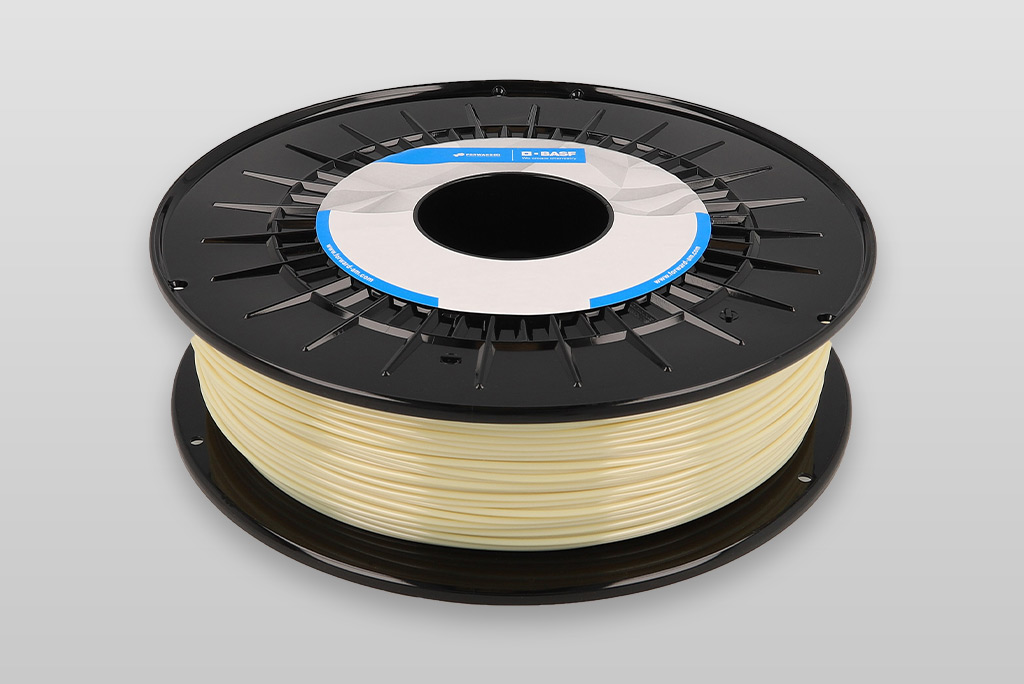
Applications
- Aerospace industry
- Automotive industry
- Electronics
- All applications exposed to high temperatures
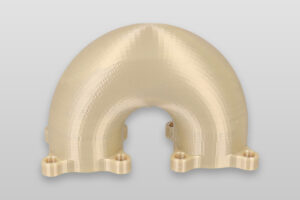
Properties
- Short-term temperature resistance up to 186°C
- Excellent dimensional stability
- Inherent flame retardancy with low smoke evolution
- Good chemical resistance against automotive fluids, halogenated hydrocarbons, alcohols and aqueous solutions
- Long-term hydrolytic stability
How to print





BASF Filaments - Metal (Stainless Steel)
Stainless Steel Composite Metal Filament for 3D Printers
Overview
Description
It is designed for ultimate ease of handling on conventional Fused Filament Fabrication 3D printers. BASF Ultrafuse® 316L combines greater freedom of design with a lower total cost of ownership – printing metal parts easier, faster and affordable.
Parts printed with Ultrafuse® 316L obtain their final properties, including hardness and strength, through the catalytic debinding and sintering process. The catalytic debinding technology was developed and introduced by BASF and has emerged as the industry standard.
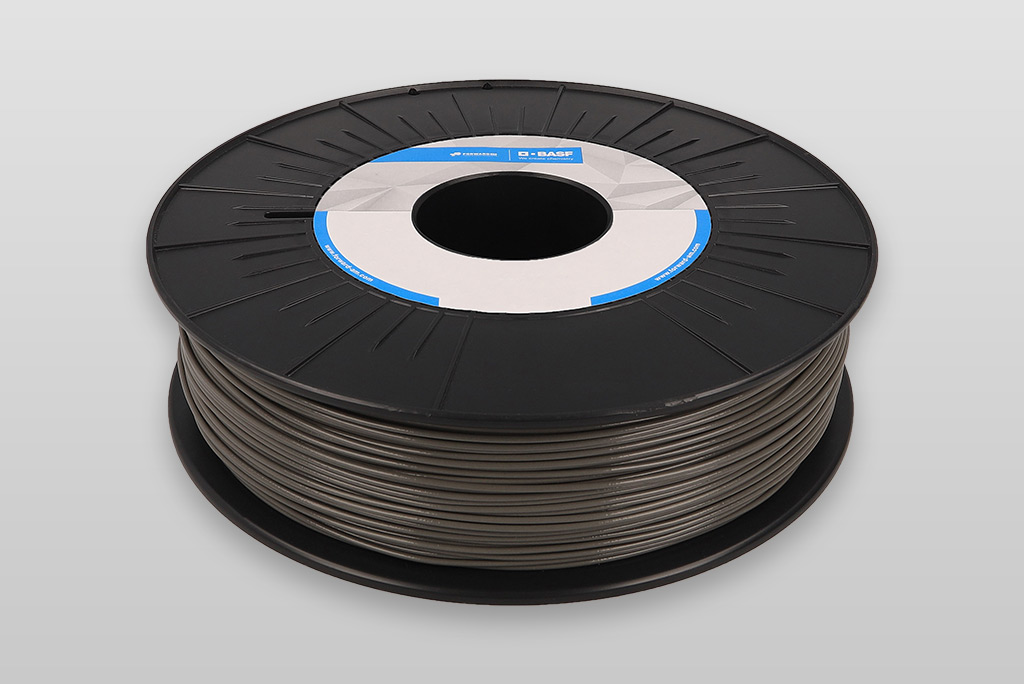
Applications
- Tooling
- Jigs and fixtures
- Small series production
- Small series production

Properties
- Easy and affordable metal 3D printing
- Fast material exchange and easy handling
- For all open source FFF printers
- Produces parts of stainless-steel 316L metal
- Uniform particle distribution enhances mechanical properties
- High flexibility of filament enables successful printing in any FFF printers
- Compatible with both Bowden and direct drive extruders
How to print





A Stainless Steel Parts for Applications that Require High Hardness and Mechanical Strength
Overview
This stainless steel can be fully heat treated to high levels of strength and hardness. It is therefore ideal for Petrochemistry, Aerospace, the Automotive and the Medical Industry.
Parts printed with our metal-polymer composite filament Ultrafuse® 17-4 PH obtain their final properties through a catalytic debinding and sintering process known from traditional Metal Injection Molding.

Applications
- Tooling
- Jigs and fixtures
- Functional prototypes
- Petrochemical/Aerospace/Automotive etc. Industries

Properties
- Easy and affordable metal 3D printing
- High mechanical strength and hardness
- Good corrosion resistance
- Fully hardened enables highest strength
- Wide range of post-processing options for green parts
How to print





